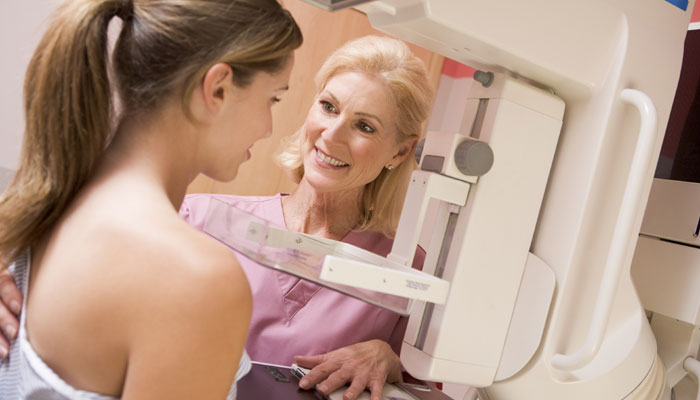 Chicago: Digital breast tomosynthesis, also known as 3-D mammography, has the potential to significantly increase the cancer detection rate in mammography screening of women with dense breasts, according to a latest study.
Chicago: Digital breast tomosynthesis, also known as 3-D mammography, has the potential to significantly increase the cancer detection rate in mammography screening of women with dense breasts, according to a latest study.
Breasts are considered dense if they have a lot of fibrous or glandular tissue but not much fatty tissue. The researchers have shown that dense breasts are more likely to develop cancer, a problem compounded by the fact that cancer in dense breasts can be difficult to detect on mammograms.
“A study of more than 25,000 women has found that digital tomosynthesis significantly increases the cancer detection rate in dense breast tissue,” said a new study presented at the annual meeting of Radiological Society of North America (RSNA) last week.
Tomosynthesis provides 3-D views of the breast. Using digital mammography plus tomosynthesis, researchers detected 80 per cent of 132 cancers in women with dense breasts, compared to only 59 per cent of mammography alone, it said.
“Our results show that implementation of tomosynthesis might indicate a new era in breast cancer screening,” said the study author Dr Per Skaane from the Department of Radiology Oslo University Hospital in Oslo, Norway.
“Tomosynthesis could be regarded as an improvement of mammography and would be much easier than MRI or Ultrasound to implement in organised screening programs,” he said.
According to the study, other imaging modalities like Ultrasound and MRI are often used to help find cancers that cannot be seen on mammograms, but both modalities have higher rates of false-positive findings, which are suspicious findings that turn out not to be cancer, it said.
“This higher false-positive rate often results in more tests and unnecessary biopsies, making MRI and ultrasound expensive to implement in high volume screening programs,” Skaane said.
So the intention of the study was to see if tomosynthesis really would significantly increase the cancer detection rate in a population-based mammography screening programme, he said.
Skaane and colleagues have been studying tomosynthesis as a promising breast cancer screening option that addresses some of the limitations of mammography by providing 3-D views of the breast.
The study compared cancer detection using full-field digital mammography (FFDM) versus FFDM plus digital breast tomosynthesis in 25,547 women between the ages of 50 and 69.
Breast density was classified based on the American College of Radiology’s Breast Imaging-Reporting and Data System (BI-RADS). The BI-RADS breast density scale runs from 1 to 4, with 1 being the least dense and 4 being the most dense.
